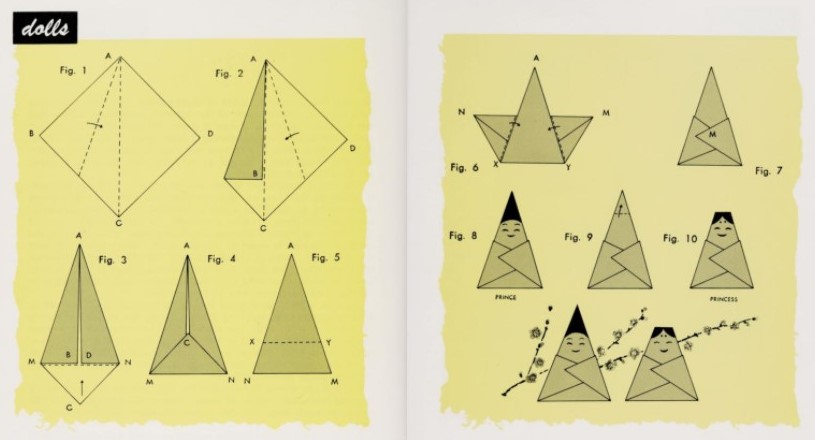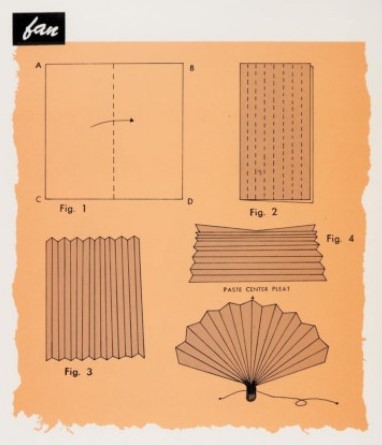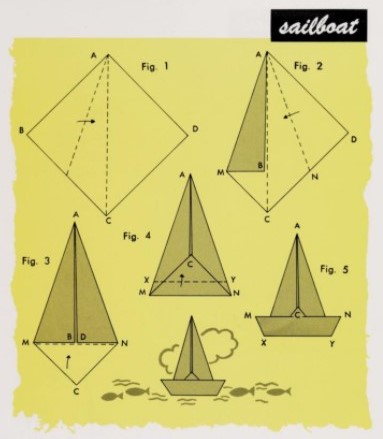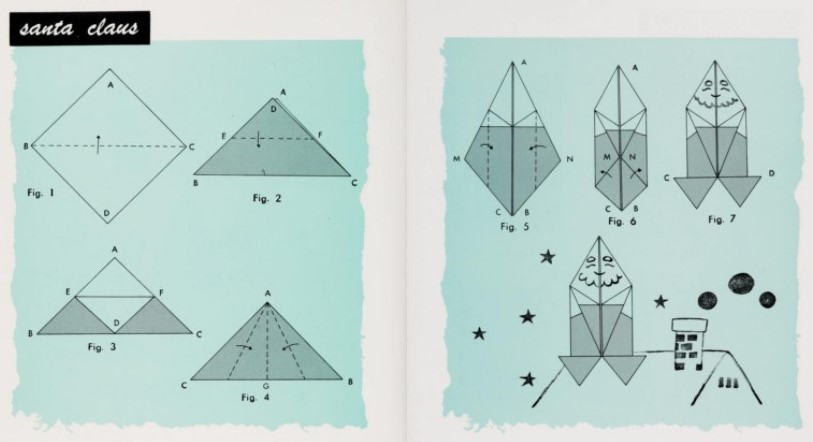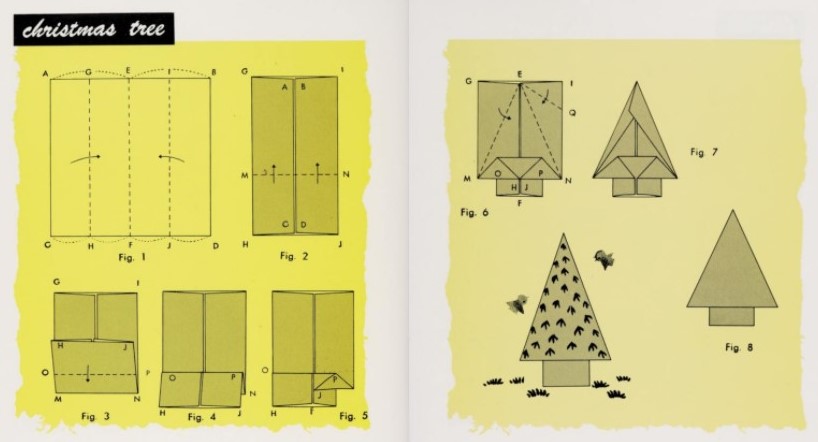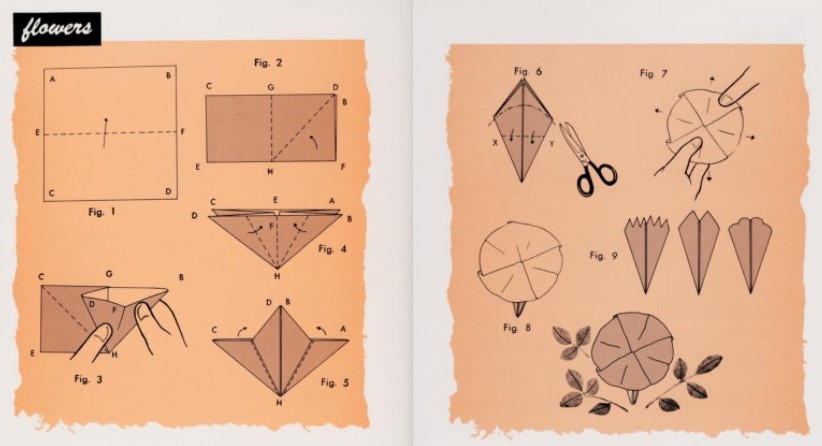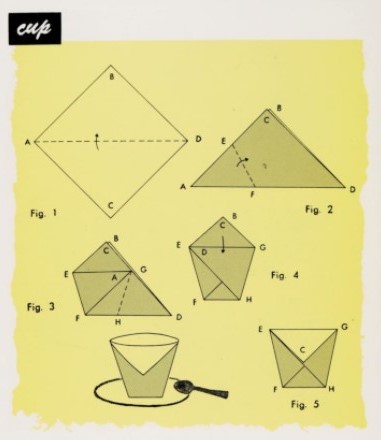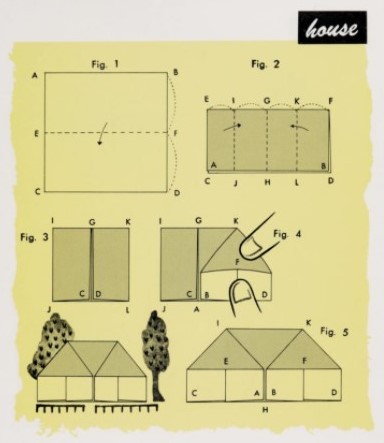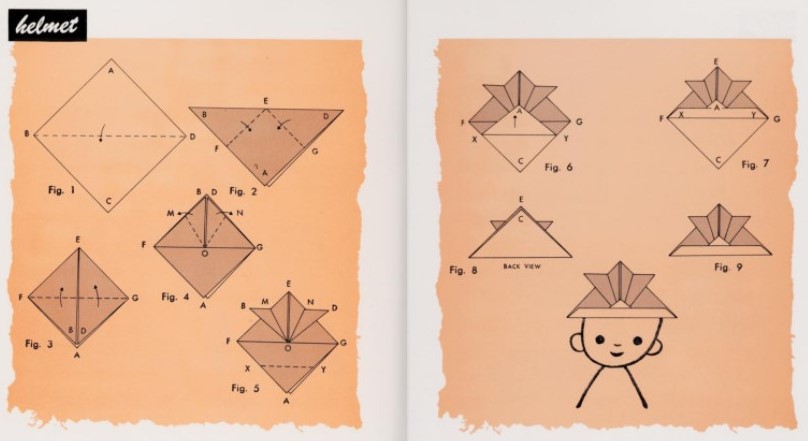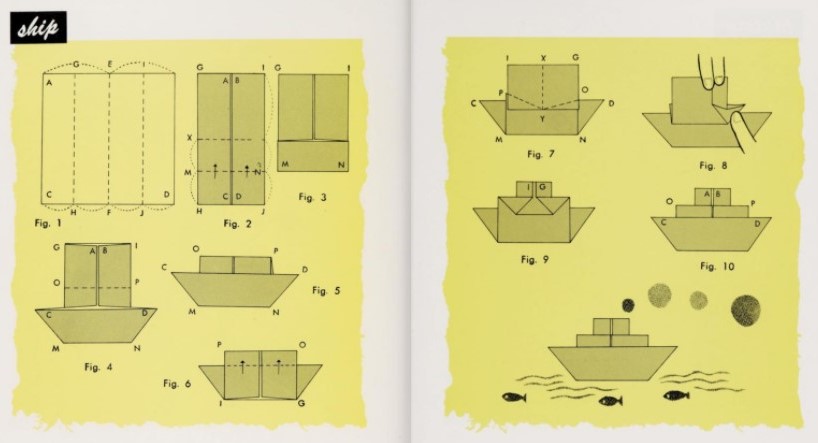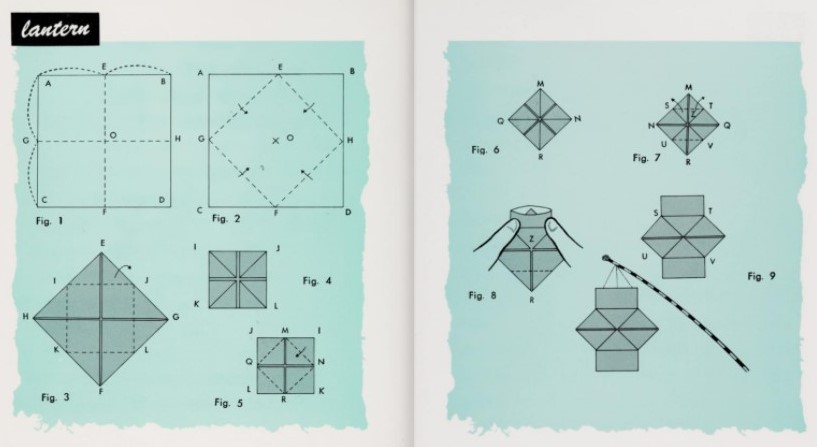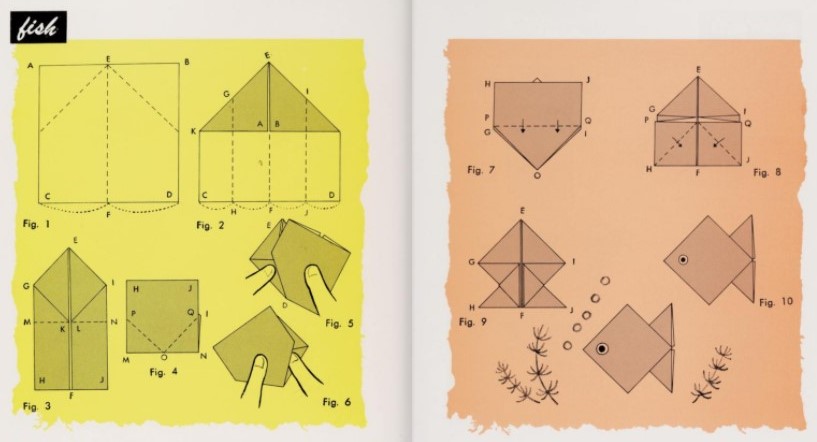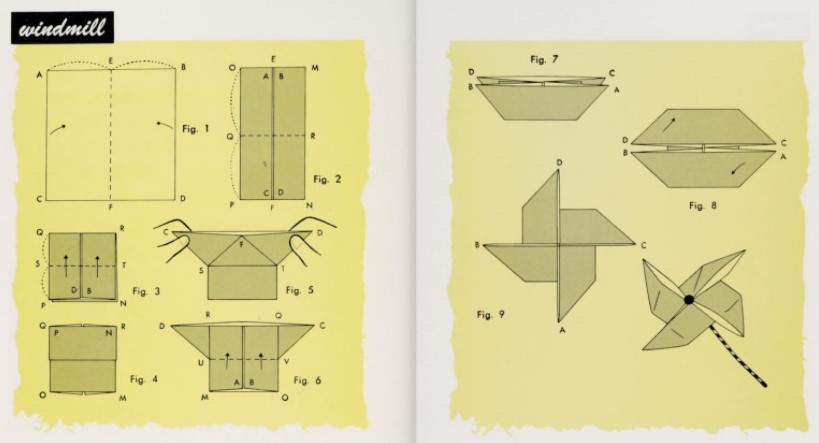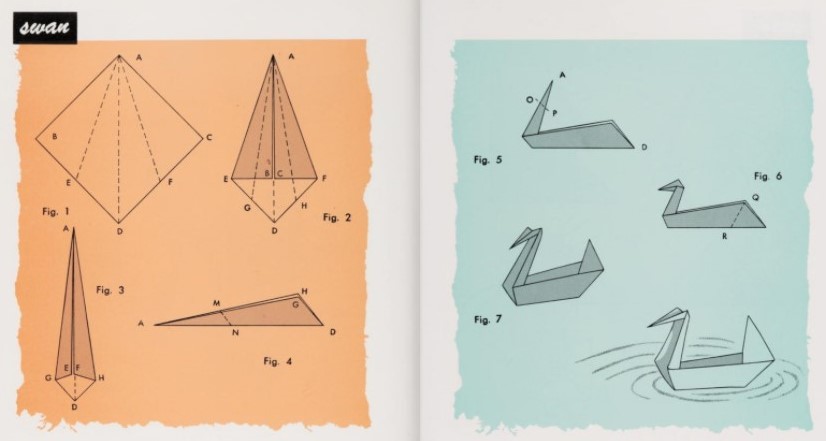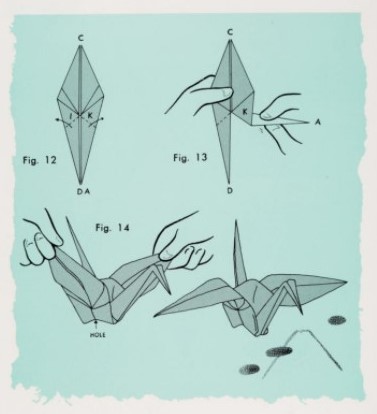| The Public Paperfolding History Project
Last updated 8/8/2024 x |
|||||||
| Origami: Book One by Florence Sakade, 1957 | |||||||
| 'Origami: Book One' by
Florence Sakade, was published by the Charles E Tuttle
Company in Rutland, Vermont and Tokyo in 1957. A full copy of the work can be found online here. All the designs are folded from squares without using cuts. In many cases it is not possible to know if the designs are traditional or were invented by the author herself. Some of these designs subsequently featured in a series of articles published in the Washington Post on successive days between 12th and 16th July 1959 inclusive. According to her obituary at News | SWET: The Society of Writers, Editors, and Translators: 'Florence Sakade, died in Tokyo on February 21, 1999. She was eighty-two years old. At Charles E. Tuttle Co., where she worked for more than forty years, she edited, designed, and produced hundreds of books—many of them prizewinners and longtime best-sellers for the company ... Florence’s life spanned three continents and most of the twentieth century. She was born in 1916 in Tottori Prefecture. When she was six years old, her family moved to Canada, where she was educated until she returned to Japan to attend Tokyo Women’s Christian College in the 1930s. After graduation she rejoined her family in Hiroshima, where she studied the traditional arts, worked in a kindergarten, and became a licensed pharmacist. After an arranged marriage, she lived with her husband in Manchuria for a little less than three years. She was detained, together with her young daughter, in what is now North Korea upon trying to escape the turmoil of World War II. After the war, she returned to Hiroshima, where she began working on children’s books for a Hiroshima publisher. Traveling often to Tokyo (at that time an 18-hour train trip) to obtain materials from the Civil Information and Education section of GHQ, she met Charles Tuttle, and began working for him when he set up his publishing company ...'. ********** The Introduction As is usual with Japanese books on origami of this period, the author shows no awareness that paperfolding is already an established recreational activity in Western Europe / the USA or that some of the designs presented in the book are originally traditional Western European designs.
The introduction does, however, contain some interesting contemporary information about the Paper Crane.
********** The Designs Dolls (Simple Prince and Princess Dolls - the Prince has a pointy head.)
********** Fan
********** Sailboat - The Simple Sailboat
********** Santa Claus
********** Christmas Tree
********** Flowers - The Morning Glory / Carnation
********** Cup - The Paper Cup
********** House - The House
********** Helmet - The Kabuto
********** Ship
********** Lantern - The Muff
********** Fish
********** Windmill - The Windmill
********** The Simple Swan
********** Crane - The Paper Crane
********** |
|||||||



